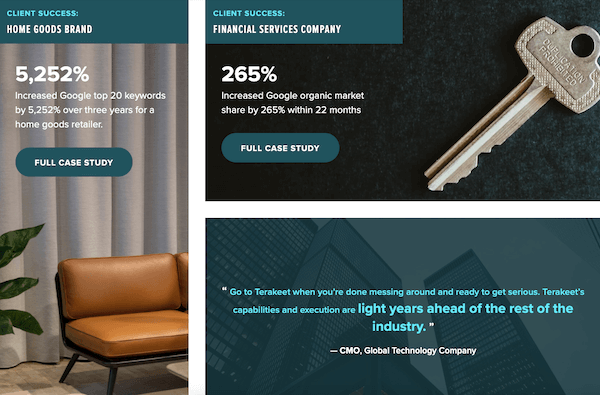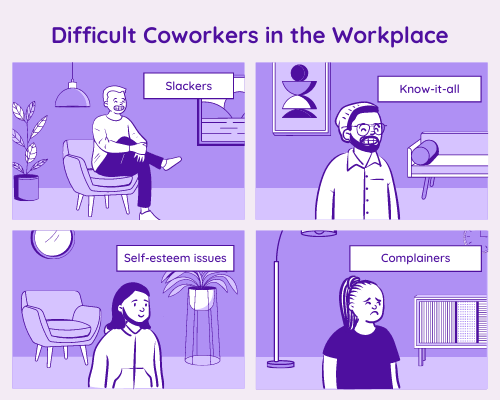With billions of active users every month, social media may be a key tool in your content marketing arsenal. The main benefit of social media is direct engagement with your audience. It’s a real-time feedback loop to help you understand what your audience cares about, and to have direct conversations with them to dig deeper.
The different types of content marketing
When thinking about various content marketing examples, remember that people learn in a variety of ways. Different types of content appeal to different segments within your audience. Some are auditory learners and are attracted to podcasts. Others are visual learners and prefer videos, infographics, or presentations. And yet others prefer text, such as blog posts, white papers, or reports.
There is no “best” type of content marketing
Some content marketing types are useful as part of an inbound marketing program. Other formats can be an important component of an account-based marketing (ABM) initiative. Similarly, certain content naturally supports your sales team.
Additionally, some types of content are better suited for particular stages in the customer journey than others. For example, blog posts, articles, and video can be an excellent way of connecting with those in the awareness stage of the journey. White papers, ebooks, and webinars are often a good fit for the middle stage of the buying process. And case studies, success stories, and ROI calculators can be the clincher when it comes to overcoming objections and convincing a prospect to become a customer.
Benefits of using different types of content marketing
1. Blogs
Blog content is an outstanding way to build your brand and increase traffic to your website. A well-organized blog strategy keeps you focused on the keywords and topics your target audience cares about. Long-form content is the perfect way to address pain points, answer questions, and establish authority in your space.
Optimized, high-quality blog posts can also perform well in the search engines, giving a boost to your SEO. Long-form content tends to be a more evergreen type of content marketing compared to many other formats. So, the content you publish today can continue to drive traffic and leads for years. Compare this to social media posts, which can get buried in newsfeeds after a few hours.
2. Case studies and success stories
Case studies and success stories are a prime example of conversion-driven content marketing. They’re an extremely effective way to generate leads in the bottom of the conversion funnel. When prospects read about similar customers who have had positive experiences with your organization, it provides them with social proof and makes their purchase decision easier.
3. Testimonials and online customer reviews
Testimonials and customer reviews are a different form of content marketing that leverages social proof. They’re especially useful in helping your brand overcome potential objections from prospects and reducing their feeling of risk. Additionally, online reviews on third-party sites like Google, Angi, or Trustpilot also serve as a valuable off-page SEO signal.
When Google sees a large number of positive reviews associated with your brand, it indicates to them that your brand is trustworthy and your website should be ranked higher in search results than brands with fewer positive reviews.
Prominently display testimonials and reviews on your home page, as well as on any other relevant pages of your website. A power tip is to place testimonials and reviews where they would be most contextually relevant to what’s on a given page.
4. White papers and ebooks
White papers and ebooks are a great way to build thought leadership, gain credibility in your industry, generate leads, and position yourself as an expert. They are usually longer and more technical than blog posts. This allows you to thoroughly explore a particular subject and share more granular information beyond what you would typically be able to do in a blog post.
Create white papers and ebooks when you have especially deep knowledge or differentiation in a specific topic area. With white papers and ebooks, it’s important to share quality content that delivers on the value they expect when taking the time to download your content.
This type of content marketing strategy tends to work particularly well toward the middle/bottom of the funnel. During this stage, you need to further educate prospects on the problem they’re facing, the solution you offer, and why you’re a better choice than a competitor.
5. Market reports
Market reports are an incredibly effective way to capture media attention and position your brand as a thought leader within your industry. This type of content marketing targets decision makers who need access to broad market data in order to build their strategy.
Below is an example of one of Terakeet’s recent reports from the beauty industry. We leveraged our internal technology to calculate the market share of the top performing websites within the cosmetics industry. Then, we published a report, a high-level blog post, and a deep dive case study about one of the top performing websites.
6. Videos
7. Infographics
Infographics allow you to present a significant amount of information quickly and clearly, including business, industry, or SEO statistics, maps, events, timelines, etc. They can function as standalone pieces of content that can be shared on social media platforms. Alternatively, they can act as a supplement to written content, like a blog post or a white paper.
Additionally, if you feature an infographic on a page on your website, you can easily create a small snippet of HTML code that allows others to embed the infographic on their sites. The HTML can be coded so that every time someone embeds the image on a website, a backlink to your website is automatically included as part of the description. The more people embed the infographic the more backlinks you get, which benefits your SEO.
Videos
Videos are also a versatile medium; you can create a variety of content in your industry that engages your market and leaves them wanting more. In this post, we walk you through how to use video marketing to your advantage.
For instance, design businesses can benefit from AR video marketing, which delivers a digital model of what you view using a smartphone. In 12 steps, including how to shoot with an iPhone, you can learn how to video market like a pro.
Microsoft uses their technology to empower everyone. Their recent commercials have shown just how inclusive their definition of “everyone” is, producing powerful messages about how technology can inspire many to achieve their goals.
Gated Content Types
By gated content types, I mean the valuable content you give away in exchange for an email address. You can use tools like LeadBoxes from LeadPages to embed a link into a piece of content that includes a form. All your visitors need to do is provide their email address and you’ll email them their free resource.
100. Guides
101. Worksheets
Worksheets are great for complementing blog posts that require following a process. They help your readers work through the ideas you’re teaching them on their own so they leave your website with something tangible.
102. Templates
Templates complement blog content that requires data punching very nicely. Alternatively, a few of the templates we’ve given away at CoSchedule include slide decks (for pitching new strategies to your team), Photoshop CC action (to automatically size every image to the perfect size for every social media network), and even spreadsheets (for managing project sprints and more).
103. Checklists
104. Research Reports
If you’re thinking about conducting original research and using a survey to gather your data, research reports are a great incentive to give your survey takers. A research report compiles your findings in a single document (typically into a PDF).
105. Posters/Desktop Backgrounds
106. Images
Giving away image bundles makes sense for some industries. For example, when we announced CoSchedule’s integration with Instagram, we gave away 100 Instagram-specific images in exchange for email addresses.
107. Mobile Apps
108. WordPress Plugins
109. Chrome Extensions
110. Kit/Bundle
If giving away one content upgrade generates email subscribers, would giving away two pieces increase your conversion rate? We tested the waters, and it appears the more content upgrades you give away for a single email address, the more conversions you’ll get.
111. Tools
CoSchedule launched Headline Analyzer Studio as a way to help our audience get more social shares, higher search rankings, and ultimately more traffic. We analyzed the data from the best content we’ve seen run through CoSchedule and made it available in an easy-to-use tool that ranks a headline’s ability to emotionally connect with readers.
112. Resource Library
Remember what I said about kits and bundles getting a higher conversion rate than only giving away a single piece of content in exchange for an email address? After you’ve created lots of content upgrades + tools, a resource library is a great way to repurpose your work in a high-conversion hub to generate more leads.
113. TPS Report
Sources:
https://terakeet.com/blog/types-of-content-marketing/
https://blog.hubspot.com/marketing/content-marketing-types
https://coschedule.com/content-marketing/types-of-content




